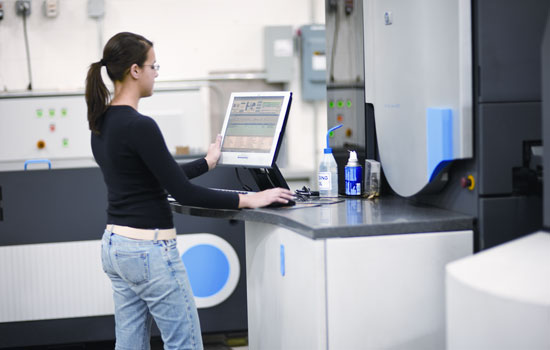RIT earns $2.8 million to design parts for ‘super’ telescope
A. Sue Weisler
Donald Figer leads the team that will design a zero-noise detector for the Thirty Meter Telescope.
The Gordon and Betty Moore Foundation recently awarded RIT $2.8 million to design, develop and build a zero-noise detector for the future Thirty Meter Telescope. Expected to be operational in the next decade, the telescope’s light-collecting power will be 10 times that of the largest telescopes now in operation.
The detector’s new sensing technology promises to penetrate the darkness of space with the greatest sensitivity ever. It could also have applications on Earth to improve everything from cell phone cameras to secure communications and surveillance systems. RIT scientist Donald Figer will lead the project.
Imaging sensors produce their own “noisy” signal that often degrades images, especially under low-light conditions. The noise can sometimes be seen as the grainy, salt-and-pepper speckling found in pictures snapped in a dark room. In applications like astrophysics, that noise can do more than ruin a picture; it can mean the difference between making a discovery or not.
According to Figer, the zero-noise detector employed with the Thirty Meter Telescope will have the same sensitivity as a combination of today’s detectors and a 60-meter telescope for probing the farthest reaches of the universe.
“You could quadruple the power of a telescope just by using this detector,” says Figer, director of the Rochester Imaging Detector Laboratory at RIT’s Chester F. Carlson Center for Imaging Science. “Or you can do the same thing by making a telescope twice the size, but then we’re talking a cost of billions of dollars and taking on a monumental engineering challenge.”
“Don’s detector research represents a technological leap forward for astrophysics and for a variety of industrial and commercial applications, as well,” says RIT President Bill Destler. “The Rochester Imaging Detector Laboratory was established at RIT with the help of the New York State Foundation for Science, Technology and Innovation. In just three years, it has gained stature as an epicenter for imaging innovation.”
Figer will lead a team of scientists from RIT and Massachusetts Institute of Technology’s Lincoln Laboratory to create a detector unlike any available today.
“This detector will have more Earthly applications too. For instance, you’ll be able to see things in low-light conditions, especially from twilight down to the darkness of the darkest night,” Figer says.
“For some applications, it will be the difference between seeing nothing and seeing everything.”









